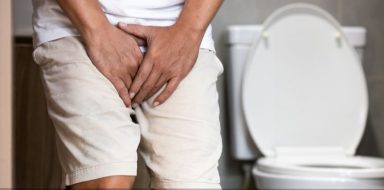Understanding the Effects of Central Precocious Puberty
Puberty typically occurs between 8 to 13 years old in girls and 9 to 14 years old in boys. This event marks the time when changes in the body occur and a person reaches sexual maturity and is, thus, able to reproduce. While rare and only impacting about 1% of individuals, there are cases where someone may mature earlier than expected. This is known as central precocious puberty.
In this article, we’ll dive further into what central precocious puberty means, the causes of it, the symptoms associated with it, and the treatment options available.
What is Central Precocious Puberty?
Central precocious puberty (CPP) is when signs of puberty occur earlier than the average age. For girls, this means that they may have signs of puberty before 8 years old. For boys, usually these early signs of puberty happen before 9. For instance, signs may include pubic body hair or the development of breast tissue.
Typically, these individuals are taller than others their age. They also tend to stop growing earlier than their peers. Surprisingly, this doesn’t necessarily mean that these individuals achieve a taller stature. In fact, individuals who experience central precocious puberty are shorter, specifically when compared to other family members.
What Are the Causes?
Generally, the cause of central precocious puberty isn’t known. However, like most conditions, there are popular theories. We know that in order for puberty to start, the brain must release the gonadotropin-releasing hormone, GnRH. This hormone signals to the pituitary gland to release gonadotropins, a hormone that then tells the sex organs to begin pumping out sex hormones. In turn, this drives sexual development. Evidently, this happens earlier in those with central precocious puberty.
Childhood obesity has been linked with this early onset of puberty. Further, a family history of early puberty, genetic issues, tumors on the pituitary gland, brain injuries, brain infections, and chemotherapy have also been associated with central precocious puberty.
One particular gene mutation related to central precocious puberty involves the MKRN3 gene. The protein that this gene produces directly contributes to the onset of puberty. Thus, researchers theorize that MKRN3 may play a significant role in this condition. Again, more research is needed to solidify these claims and understand why this early onset of puberty happens. However, this gene may hold the answer.
Stress in teens is normal, as they go through various changes. However, if these six symptoms arise, your teenager may need support.
Common Symptoms
Typically, signs and symptoms of central precocious puberty include:
- The first period for girls
- Breast tissue development for girls
- Enlarged penis and testicles for boys
- Facial hair and deepening of the voice for boys
- Pubic and underarm hair
- Acne
- Emotional mood swings
- Adult body odor
It’s important to note here that many children may develop early pubic and underarm hair. However, this isn’t necessarily a sign of early puberty. If there are no other symptoms, true puberty has yet to happen.
If your child has any of the symptoms above (not just pubic or underarm hair), it’s a good idea to book an appointment with your family doctor. They can determine if central precocious puberty is taking place and what can be done to help.
Central Precocious Puberty Treatment
The main goal of treatment is to help your child develop normally into a fully developed adult with a normal height stature. Usually, treatment will vary depending on what the cause of the early onset of puberty is. For instance, for tumors or brain infections and injuries, these issues or conditions will be treated first.
However, doctors use a treatment called GnRH analogue therapy to treat this condition. This treatment involves a monthly injection of a man-made version of GnRH, which stops the pituitary gland from releasing hormones that start puberty. This halts development and delays it until your child is at an appropriate age for puberty to begin. Typically, it takes about 16 months to be off of this medication before puberty will take place.
In place of injections, there are also options that involve an implant in your child’s upper arm. This impact functions for a year and delivers the same treatment without regular injections. After a year, the implant is removed. Depending on your child’s age, this implant may be replaced with a new one.
It’s also important to help your child support and cope with this early onset. It can be emotionally and psychologically difficult. There is also the possibility of early sexual exploration and experimentation. Educating your children about what is happening can help. Further, counseling can help you both navigate through the situation with less detrimental long-term effects.
In Review
All in all, central precocious puberty is entirely treatable and sometimes preventable. It’s crucial to pay attention to this condition and if it’s happening, since it can be associated with underlying medical issues. If caught early enough, your child can get the treatment they need to maintain or improve their health, as well as develop into fully functioning and productive adults.







